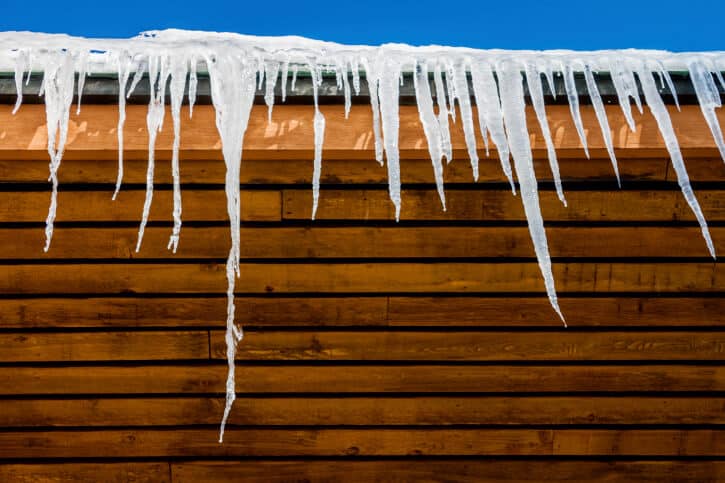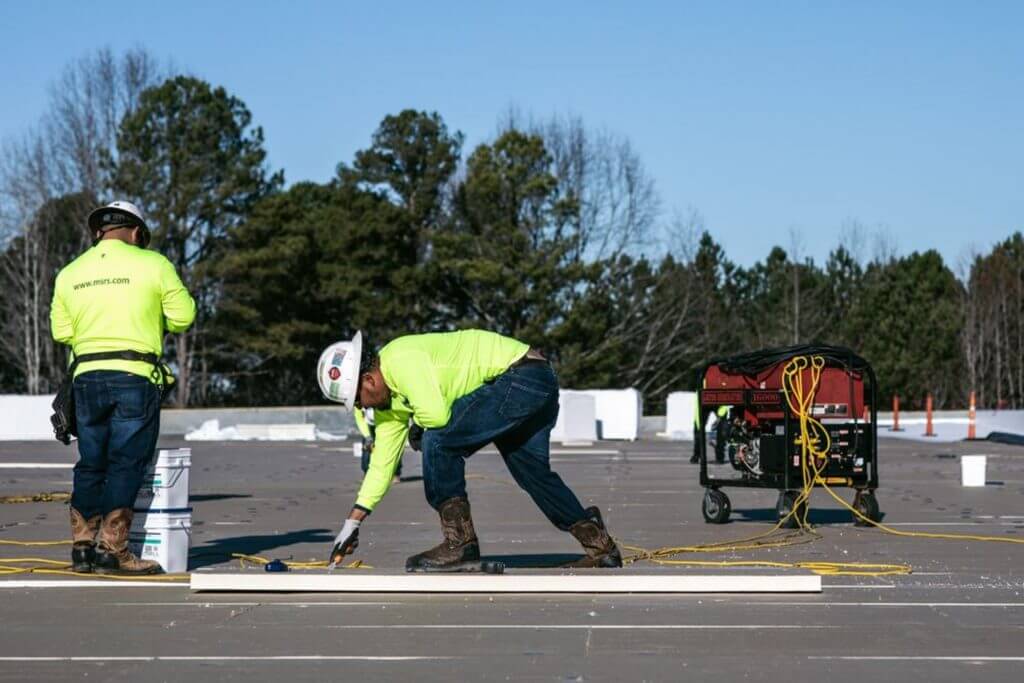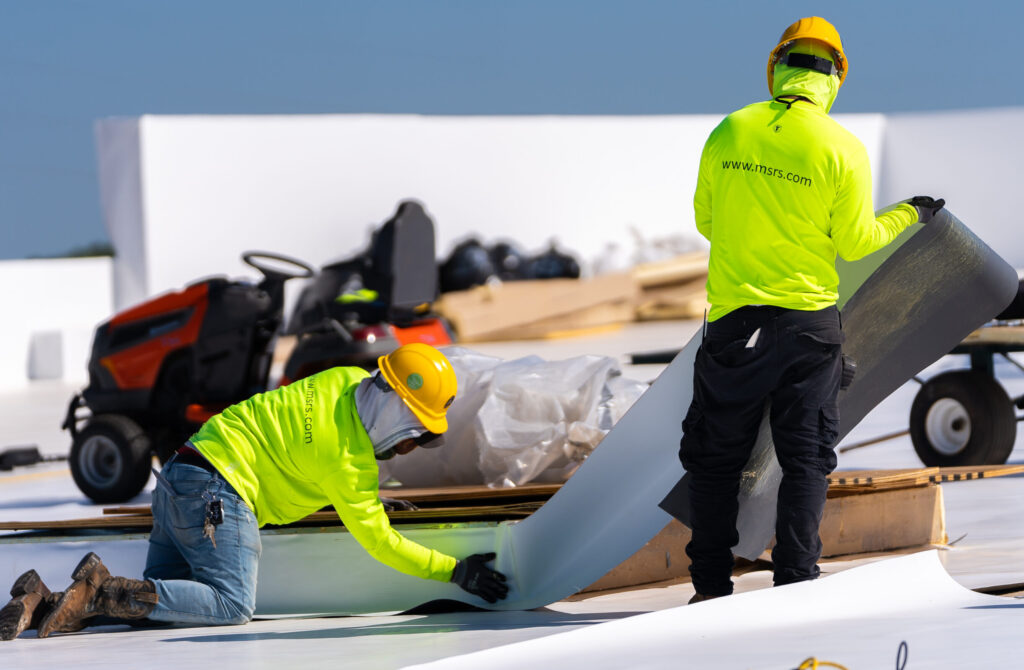Why Most Contractors Won’t Even Try to Install a Freezer Cooler Roof


Only a handful of contractors in the country have the expertise and experience necessary to handle the risky and difficult work of putting a roof on a freezer facility, like the giant industrial warehouses that store and ship frozen food. In fact, many commercial flat roof contractors don’t even compete for this type of work because the level of difficulty—as well as the consequences of getting it wrong—compels them to seek lower-hanging fruit.
Not Your Average Building — Or Roof
Buildings that warehouse frozen products are designed to maintain a temperature of between minus-40 and 40 degrees. The function of a roof is always to keep the inside of the building dry but with freezer buildings, there is the added challenge of eliminating the exchange of vapor and moisture, as well.
A normal building can breathe, but a cooler must be airtight.
In a regular building, air can travel from the building to the ceiling, past the deck, and up to the insulation just below the roof, but if warm air from the outside mixes with cold air from the inside just below a freezer cooler roof, enormous icicles will form.
Without perfectly airtight seals across the roof, an entire building can be compromised.
Logistics that Leave Most Roofers Frozen with Fear
From the outside, the roof of a freezer building doesn’t look any different than the roof of any other building. But peel off the outer layer and you’ll find a maze of extraordinary craftsmanship and flashing details, all designed to prevent the exchange of air and moisture.
Vapor locks are installed to prevent air exchange where the deck meets the outside wall. Since both are made of metal, the seal will not be airtight on its own. The trick is to leave a gap between the two and fill it with insulation foam. Caulks and mastics are used both inside and outside to seal the entire building. Tricky edge details will involve additional sealants and fastening.
Once this patchwork of foam, insulation, and caulk ensures that every tiny gap is plugged, rendering the facility airtight, the membrane roofing is placed on top to make it watertight.
Doing it wrong can ruin an entire building—and a roofer’s reputation. There is no way to test the building and roof to see if it is completely airtight before they turn on the freezer inside.
And the building will tell you very quickly thereafter.
Within a few weeks, it will be obvious to everyone in the building whether the roof stood up to the pressures of the freezer environment.
LIKE WHAT YOU JUST READ?
Sign up for our newsletter to get fresh articles, updates and more!
Forecasting the Future of Commercial Roofing
Technology and modern developments have advanced roofing operations and created safer, more efficient ways to get the job done. At Mid-South, these advances have been implemented without reducing an essential part of our business—our people.
Yearly Wrap-Up
As we close out 2023, we’re grateful for an incredible year for our team. Mid-South would not be the company it is today without our hard-working employees and faithful customers. While we look back at all that our company has accomplished this year, we also look forward to another year moving Forward Together. Training Sessions…


